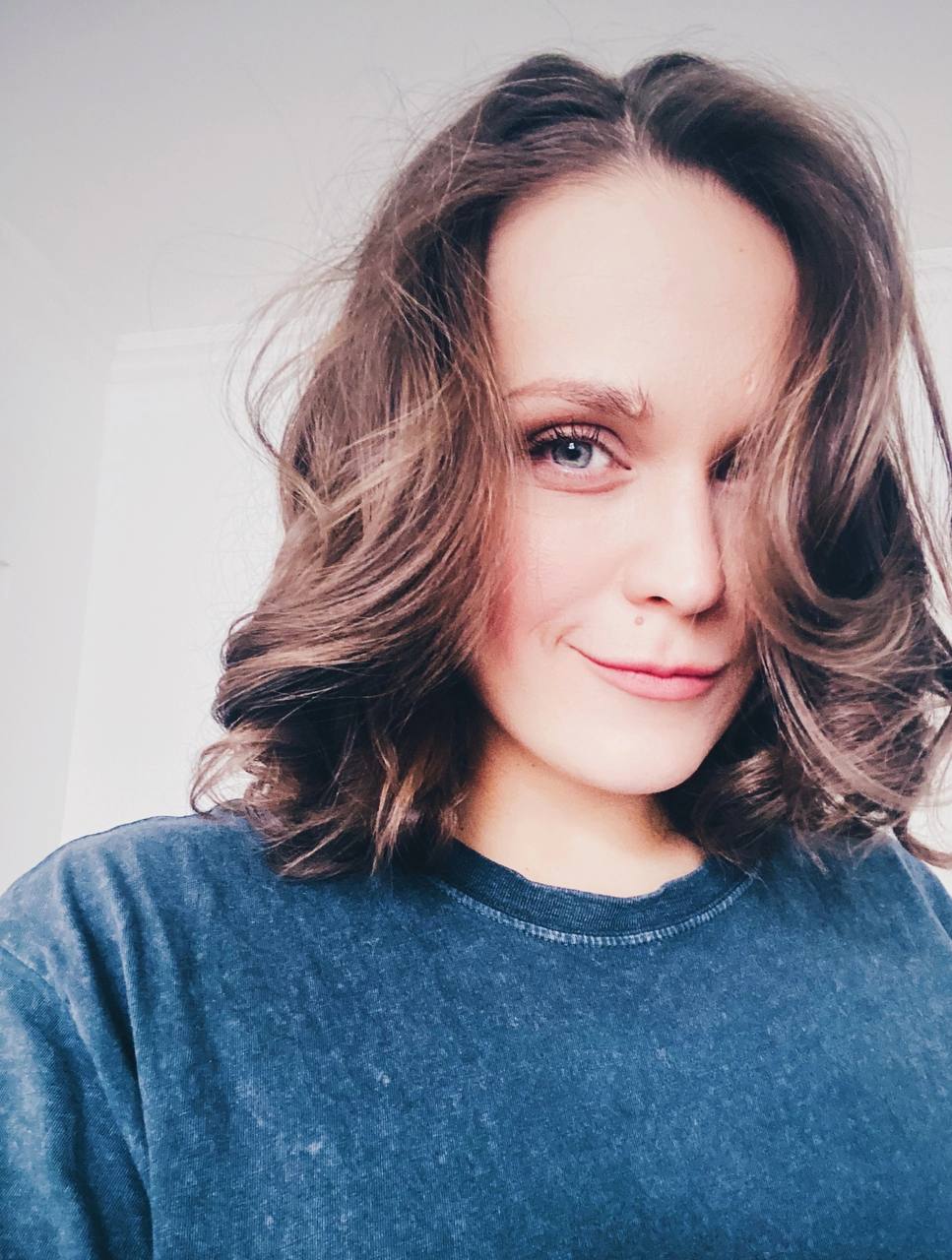Art&

Bio
Born in Kazakhstan in 1989, she has lived and worked in Moscow since 1991. With a background in art-focused education and a degree from the Institute of Journalism and Literary Creativity, Ekaterina has been passionate about artistic expression from a young age. Her early projects involved creating art objects, experimenting with computer graphics, and merging traditional and contemporary techniques.
A notable milestone in her career was her collaboration with the PG Group, a creative collective recognized with the Kandinsky Prize in 2008 for their work in media art.
Since 2004, Ekaterina has been exploring film photography, skillfully combining it with post-processing and collage techniques. Her artistic practice spans a wide range of media, including photography, digital art, and sculpture, showcasing her versatility and technical mastery.
Ekaterina has collaborated with leading global brands such as Samsung, Apple, Netflix, PepsiCo, Jaguar, Walt Disney, Yandex, MTS, Nestle, Dove, and Sisley, among others. Her photography has been featured in prestigious publications, including Vogue, Esquire, L'Officiel, Elle, Harper's Bazaar, Numero, Cosmopolitan, Forbes, Grazia, Toksick, and InStyle.
Her commissioned works for the Moscow Kremlin Museums further underline her ability to engage with cultural institutions at the highest level.
Ekaterina Gerbey is a Russian multi-medium artist, photographer, journalist, and art director known for her innovative approach to blending analog and digital media.
Art&
Power
Artist statement
What I love more is taking photographs, drawing, and creating art objects from an array of materials: ceramics, textiles, glass, silicone, glue, and many others. I choose whatever medium best suits the task at hand.
I’ve been passionate about photography since I was 15, and most of my work revolves around it. Sometimes, photography is simply the most effective way to tell a story. Other times, it becomes a necessity because my objects often have a unique yet ephemeral nature — they decay, rot, or disappear. In such cases, photography becomes the only way to capture the idea before the object dries out, falls apart, or starts to stink.
My projects span a variety of themes. I’ve explored body acceptance in a world dominated by media-driven beauty standards and gender self-identification. For instance, one of my works portrays a drag performer gradually removing makeup, revealing the living, genuine person underneath the heavy layers of powder and mascara — ordinary and sincere.
In my latest project, I’m working to create a Russian visual code that feels instantly recognizable to those who share its cultural roots. The idea is simple: a person steps into a space, sees the artworks, and immediately understands what they are and why they look that way because these elements are deeply familiar from everyday life. This immediate emotional response fosters a sense of belonging and a warm connection.
Who hasn’t torn a piece off a loaf of bread on their way home? These works evoke a sense of shared identity while also triggering deeply personal memories, encouraging viewers to recall intimate moments. I deliberately minimize the objects, placing them on neutral backgrounds and stripping away context to distill them to their purest form. At the same time, I refine them to an idealized, almost sterile aesthetic — reminiscent of advertising — turning them into precious artifacts. After all, happy childhood memories are among the few treasures money can’t buy.
I design my works to seamlessly integrate into interiors, allowing people to live with art rather than hide it away in storage. Storage is great, of course, but imagine someone living abroad. They place one of these pieces in their home, and it serves as a bright reminder of cherished moments tied to their homeland. It also becomes a way to share stories about life in Russia with those who have never been there. Isn’t that wonderful?
Through this "guerrilla" approach, I see an opportunity to reconnect with my roots because art in our culture has traditionally been applied and functional. Without delving too deeply into history, consider this: for our grandmothers, crystal was treasured and displayed under glass. Now, when someone buys a piece from this series, crystal becomes part of everyday life again, but in a new context. Stories like these help us embrace ourselves as a people, with all our quirks — even our grandmothers’ crystal. We learn to live in the future without rejecting the past, adapting its legacy to fit the present.
I love creating synergy between analog and digital mediums, blending traditional folk art techniques, elements of Eastern European industrial design, and cutting-edge machine learning technologies. This sparks a unique dialogue between the past, present, and future. In essence, I’m trying to introduce a grandmother to Bitcoin — and Bitcoin to a grandmother — just to see what happens.
On a broader level, I’m fascinated by exploring national, gender, social, and spiritual self-identification through the search for and expression of a unique cultural and visual code. If you’ve read this far, thank you for your attention. I hope I’ve made everything clear.
I’ve been passionate about photography since I was 15, and most of my work revolves around it. Sometimes, photography is simply the most effective way to tell a story. Other times, it becomes a necessity because my objects often have a unique yet ephemeral nature — they decay, rot, or disappear. In such cases, photography becomes the only way to capture the idea before the object dries out, falls apart, or starts to stink.
My projects span a variety of themes. I’ve explored body acceptance in a world dominated by media-driven beauty standards and gender self-identification. For instance, one of my works portrays a drag performer gradually removing makeup, revealing the living, genuine person underneath the heavy layers of powder and mascara — ordinary and sincere.
In my latest project, I’m working to create a Russian visual code that feels instantly recognizable to those who share its cultural roots. The idea is simple: a person steps into a space, sees the artworks, and immediately understands what they are and why they look that way because these elements are deeply familiar from everyday life. This immediate emotional response fosters a sense of belonging and a warm connection.
Who hasn’t torn a piece off a loaf of bread on their way home? These works evoke a sense of shared identity while also triggering deeply personal memories, encouraging viewers to recall intimate moments. I deliberately minimize the objects, placing them on neutral backgrounds and stripping away context to distill them to their purest form. At the same time, I refine them to an idealized, almost sterile aesthetic — reminiscent of advertising — turning them into precious artifacts. After all, happy childhood memories are among the few treasures money can’t buy.
I design my works to seamlessly integrate into interiors, allowing people to live with art rather than hide it away in storage. Storage is great, of course, but imagine someone living abroad. They place one of these pieces in their home, and it serves as a bright reminder of cherished moments tied to their homeland. It also becomes a way to share stories about life in Russia with those who have never been there. Isn’t that wonderful?
Through this "guerrilla" approach, I see an opportunity to reconnect with my roots because art in our culture has traditionally been applied and functional. Without delving too deeply into history, consider this: for our grandmothers, crystal was treasured and displayed under glass. Now, when someone buys a piece from this series, crystal becomes part of everyday life again, but in a new context. Stories like these help us embrace ourselves as a people, with all our quirks — even our grandmothers’ crystal. We learn to live in the future without rejecting the past, adapting its legacy to fit the present.
I love creating synergy between analog and digital mediums, blending traditional folk art techniques, elements of Eastern European industrial design, and cutting-edge machine learning technologies. This sparks a unique dialogue between the past, present, and future. In essence, I’m trying to introduce a grandmother to Bitcoin — and Bitcoin to a grandmother — just to see what happens.
On a broader level, I’m fascinated by exploring national, gender, social, and spiritual self-identification through the search for and expression of a unique cultural and visual code. If you’ve read this far, thank you for your attention. I hope I’ve made everything clear.
I’m a journalist by education, and I truly enjoy writing — but not when it comes to crafting artist statements about myself.





Contacts
+ 79150585058
kategerbey@gmail.com
